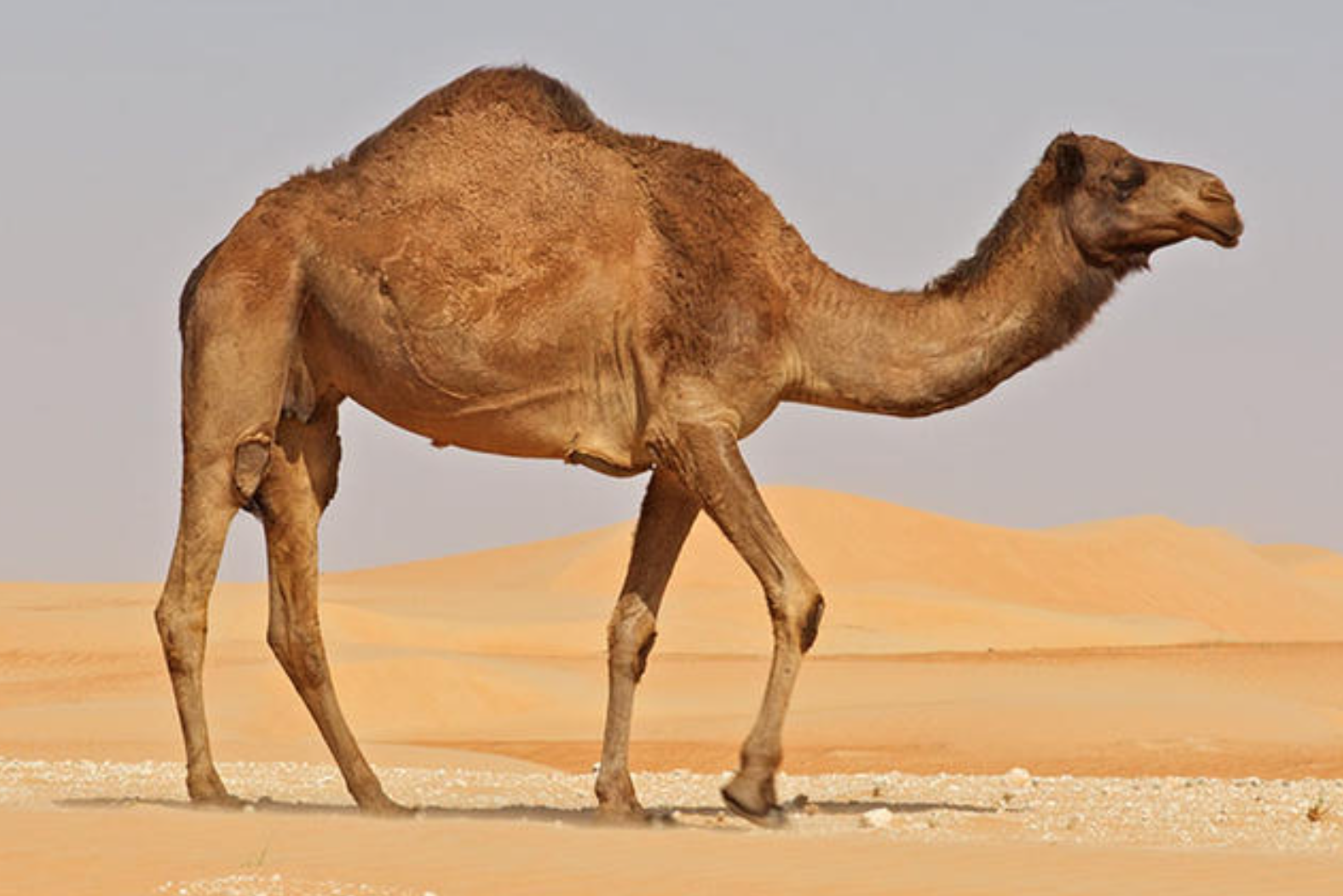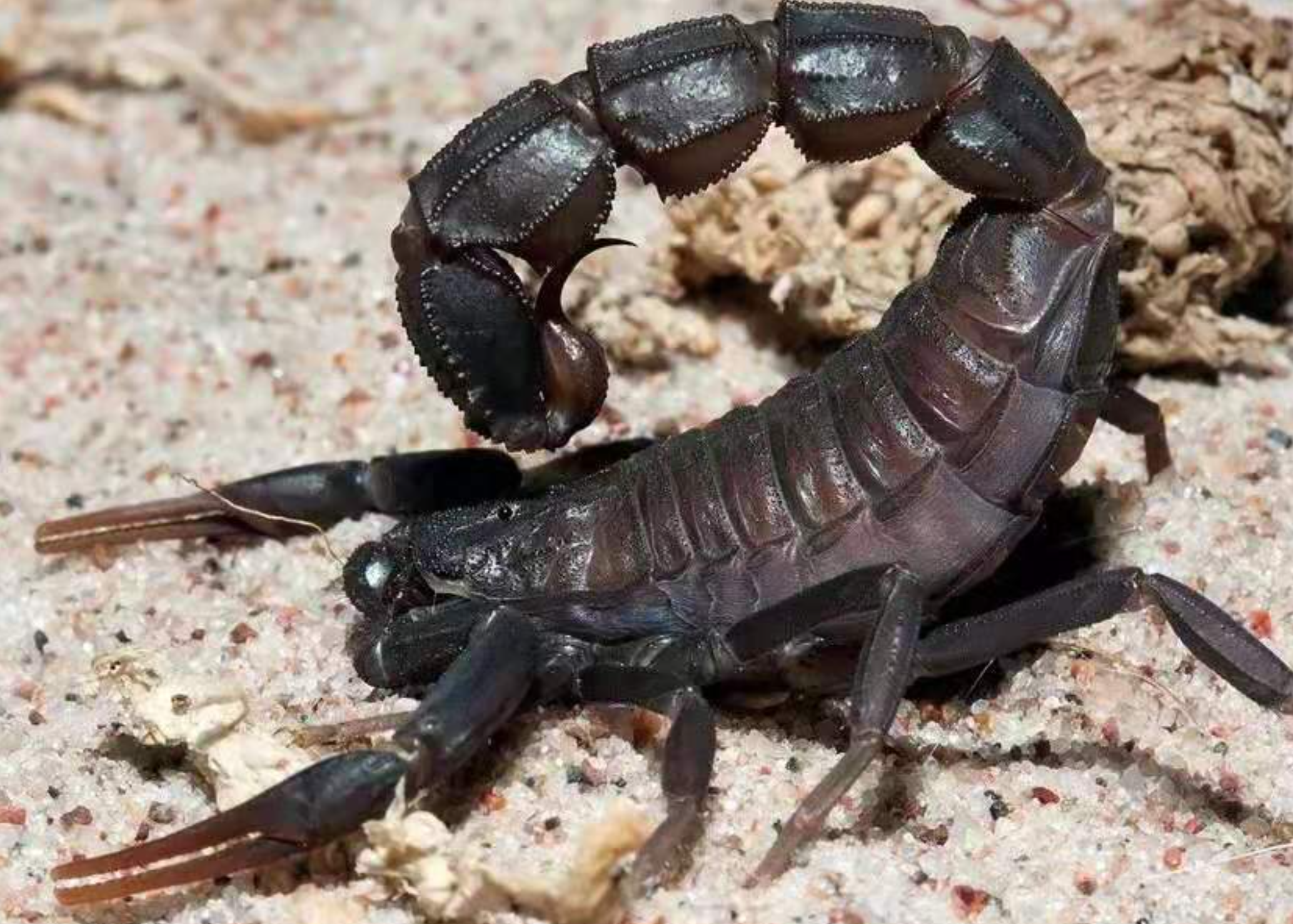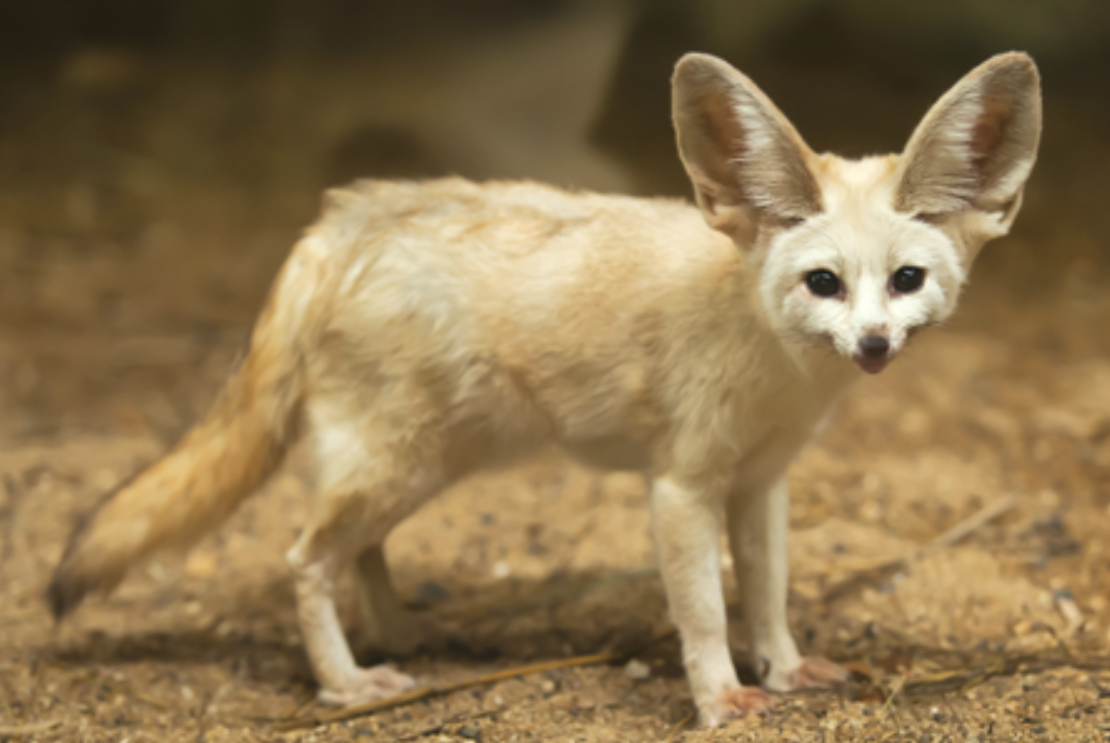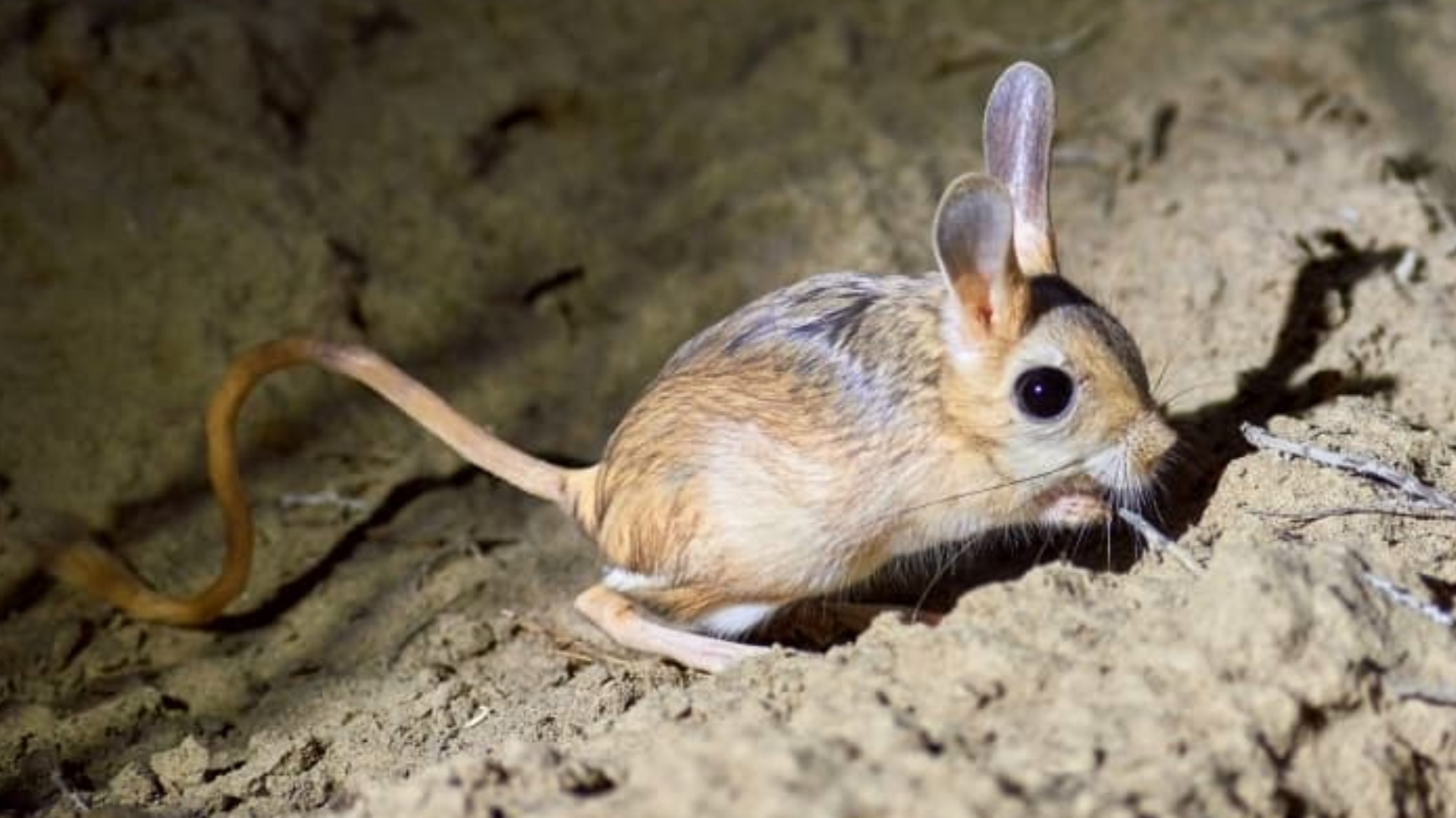Deserts cover around one fifth of the Earth's surface and form due to low rain fall. Deserts are some of the most extreme places to live on Earth. This causes animals and plants to adapt to these harsh enviorments. There are 4 types of Deserts hot and dry, semi-arid, coastal, and cold Deserts. Deserts can range anywhere between the cold Antarctica of -40°C or -40°F to the hot Sahara of 47°C or 117°F. Although if we include all types of deserts we can have one of the coldest places on Earth and one of the hottest places on Earth. On this page we will only talk about the wildlife in hot and dry deserts.
Dromedary Camel

The Dromedary Camel lives in desert areas in North Africa and the Middle East. This animal is also considered semi-domesticated meaning they are no longer wild animals and their free range is under control of local herders. The adult males can range between 2.2 - 3.6 meters tall with a mass of 880 - 1,300 lbs and the females can range between 1.7 - 1.9 meters tall with a mass of 660 - 1,200 lbs. The average life expectancy of the Dromedary is around 40 years and the gestation period is 12 to 14 months. they are herivores and their diets primarily consist of thorny plants, dry grasses, and saltbush.
Fat-tailed Scorpion

Fat-tailed Scorpions inhabit desert and semi-desert areas of North Africa, the Middle East, and asia. Fat-tailed scorpions are highly venomous and have some of the most potent venom among scorpions. Being stung by Fat-tailed Scorpions is known to kill several humans each year. There are three types of fat-tailed Scorpion Androctonus australis or yellow fat-tail, Androctonus crassicauda or the Arabian fat-tail, and Androctonus bicolor or black fat-tail. Fat-tail scorpions can live up to 5 years and grow up to a length of 10cm or just under 4in. they are nocturnal predators that will eat anything smaller then themselves and can go months without consuming food.
Fennec Fox

The fennec fox is a smaller fox only growing up to 7.9in and can have a mass of 1.5 - 3.5 lbs. The fennec fox is native to the deserts of North Africa. Fennex foxes live in groups called a skulk and they share an underground den. Although they live in groups they will generally hunt alone at night. Fennec foxes are omnivores and will eat insects, small rodents, lizards, fruits, and small birds. The way fennex foxes hunt most of the time is by using their abnormally large ears to listen for prey under the sand and once they located prey they will start to dig.
Jerboa

Jerboa's are small hopping rodents with a powerful legs and long ears and tail that inhabit Northern Africa and Asia. Jerboa's can leap several feet in the air with their specially adapted legs. they live in burrows to escape the heat and some predators. Jerobas are mostly solitary creatures but they can form small colonies. Jerboas have bodies that range from 5 to 15 cm or 2 to 5.9 in with a long tail that can range from 7 to 25 cm. Jerboas can leap up to 3 meters or 10 feet when alarmed. The long tail props the animal up when it stands and is used for balance when hopping away. During the day jerboas rest in burrows and emerge at night to search for seeds, plants, and insects.
Rattlesnake

Rattlesnakes are venomous snakes that inhabit deserts in North America, Mexico, and South America. The average length of rattlesnakes is 0.8 - 1.8 meters or 3 - 6 feet and have a mass of about 10 lbs. Rattlesnakes are carnivores that mainly prey on rodents, birds and lizards and can go 2 weeks between meals. Although rattlesnakes are considered more deadly than some other snakes the fatality rate of those bit by rattlesnakes is less than 1 in 600. Even though the fatality rate is low for Rattlesnake bites you should still get checked out within a 2 day time frame if ever bitten by one.
